Abstract
Studies on the rate and extent of galacturonic acid and isolated pectin digestion were carried out with nine strains of rumen bacteria (Butyrivibrio fibrisolvens H10b and D16f, Bacteroides ruminicola 23 and D31d, Lachnospira multiparus D15d, Peptostreptococcus sp. D43e, B. succinogenes A3c, Ruminococcus flavefaciens B34b, and R. albus 7). Only three strains, 23, D16f, and D31d, utilized galacturonic acid as a sole energy source, whereas all strains except A3c and H10b degraded (solubilized) and utilized purified pectin. Nutrient composition of the basal medium and separate sterilization of the substrate affected the rate and extent of fermentation for both substrates. Pectin degradation and utilization were measured with two maturity stages each of intact bromegrass and alfalfa. For bromegrass I, all strains tested (B34b, 23, D16f, D31d, D15d, and D43e) degraded a considerable amount of pectin and, with the exception of B34b, utilized most of what was degraded. Similar, but lower, results were obtained with bromegrass II, except for the two strains of B. ruminicola, 23 and D31d, which were unable to degrade and utilize pectin from this forage. All strains were able to degrade and utilize pectin from both maturity stages of alfalfa; however, values were considerably lower for strains 23 and D31d. Synergism studies, in which a limited utilizing strain, B34b, was combined with the limited degrading strain, D31d, resulted in a slight increase in degradation and a very marked increase in utilization of the pectin in all four forages. Similar results were obtained on both alfalfa substrates with a combination of strains B34b and D16f; however, no increases were observed with this combination on bromegrass.
Full text
PDF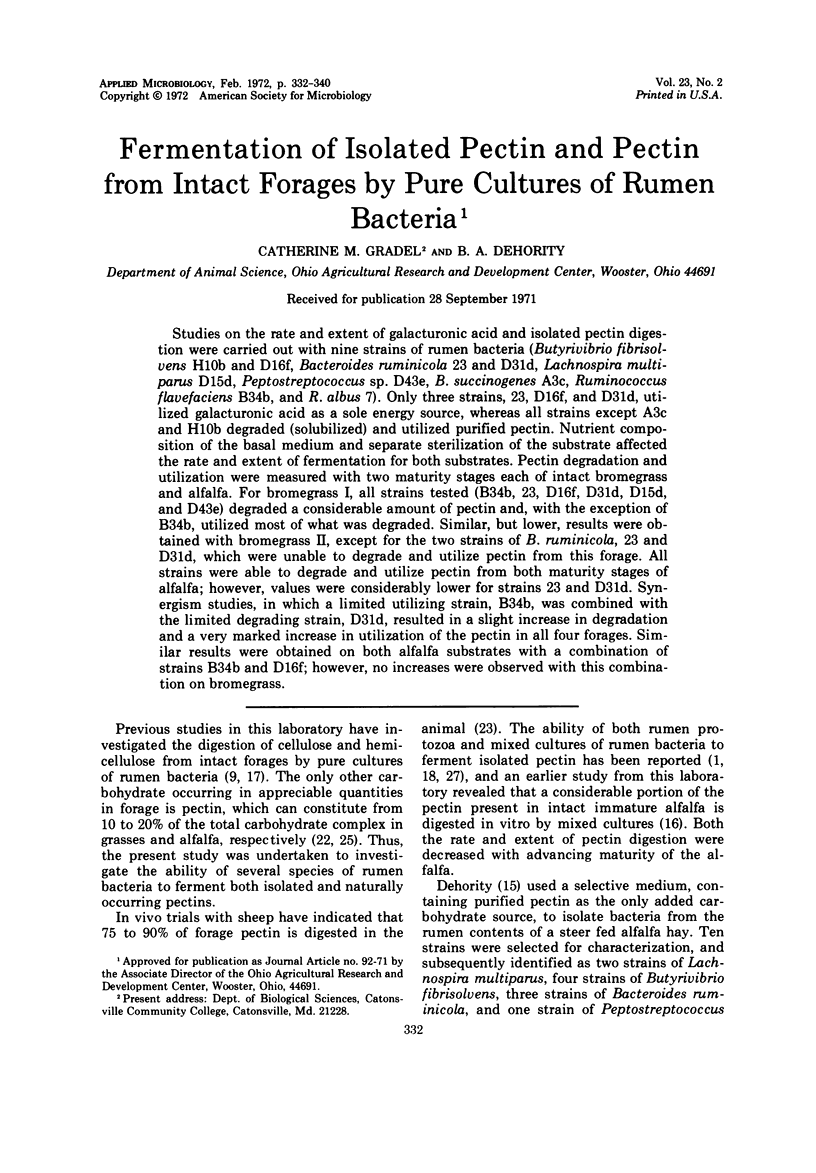
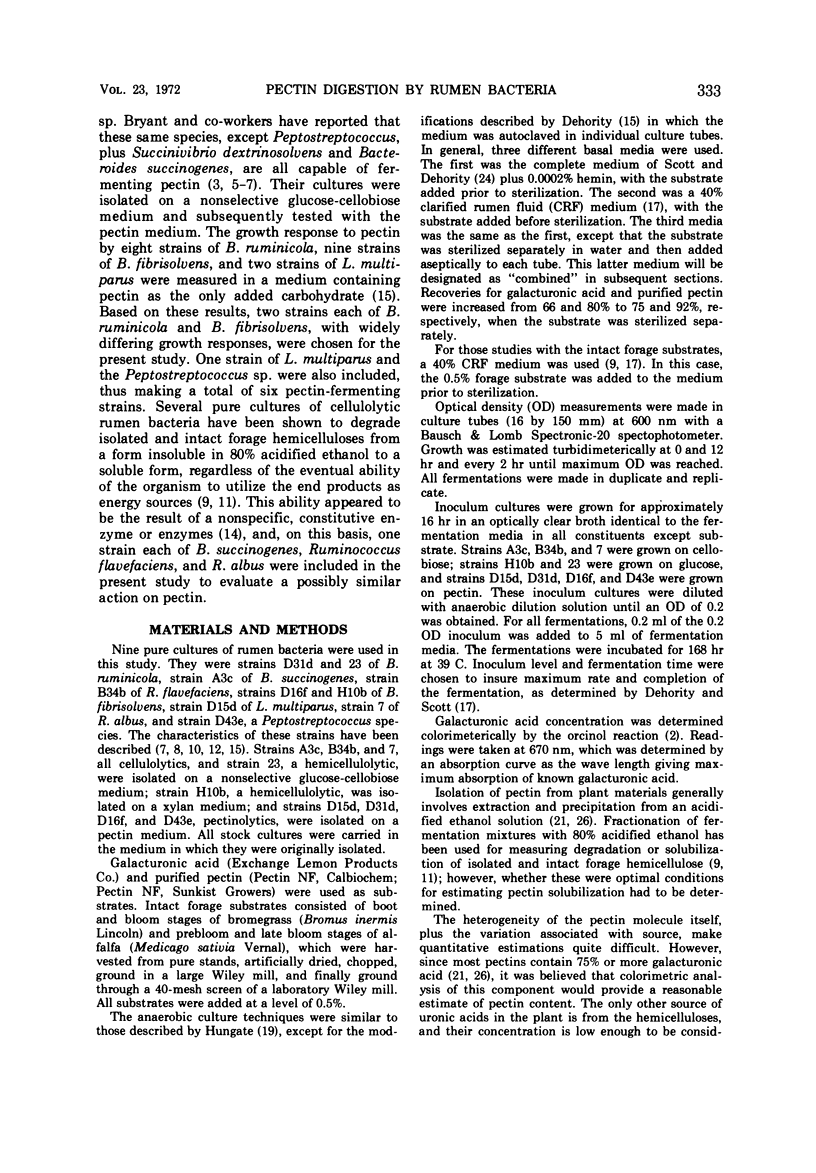
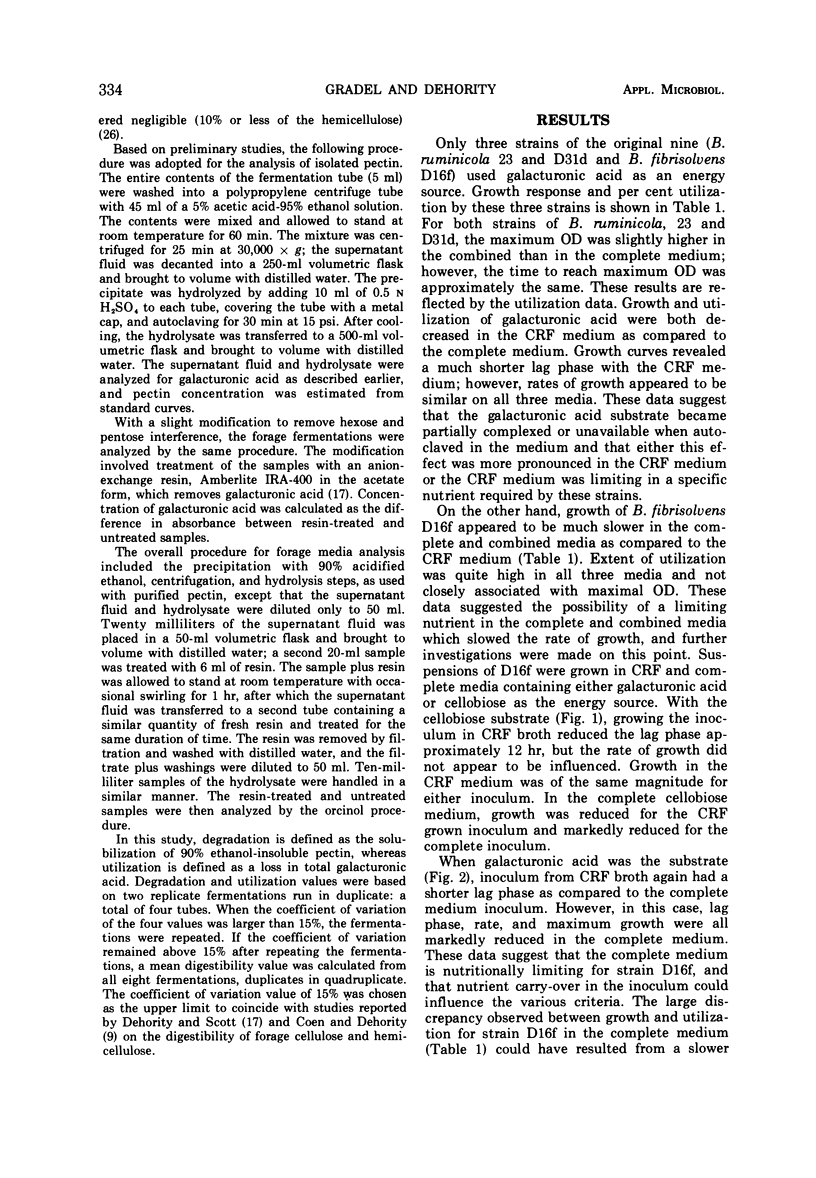
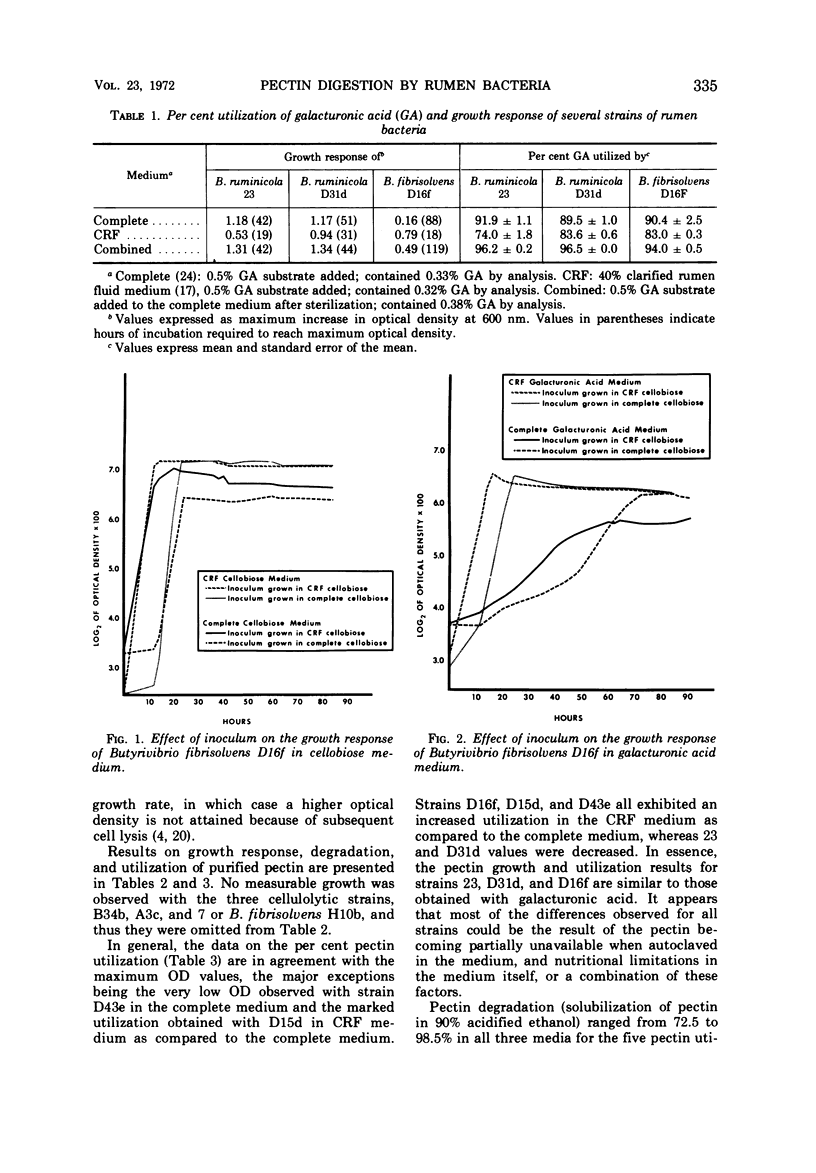
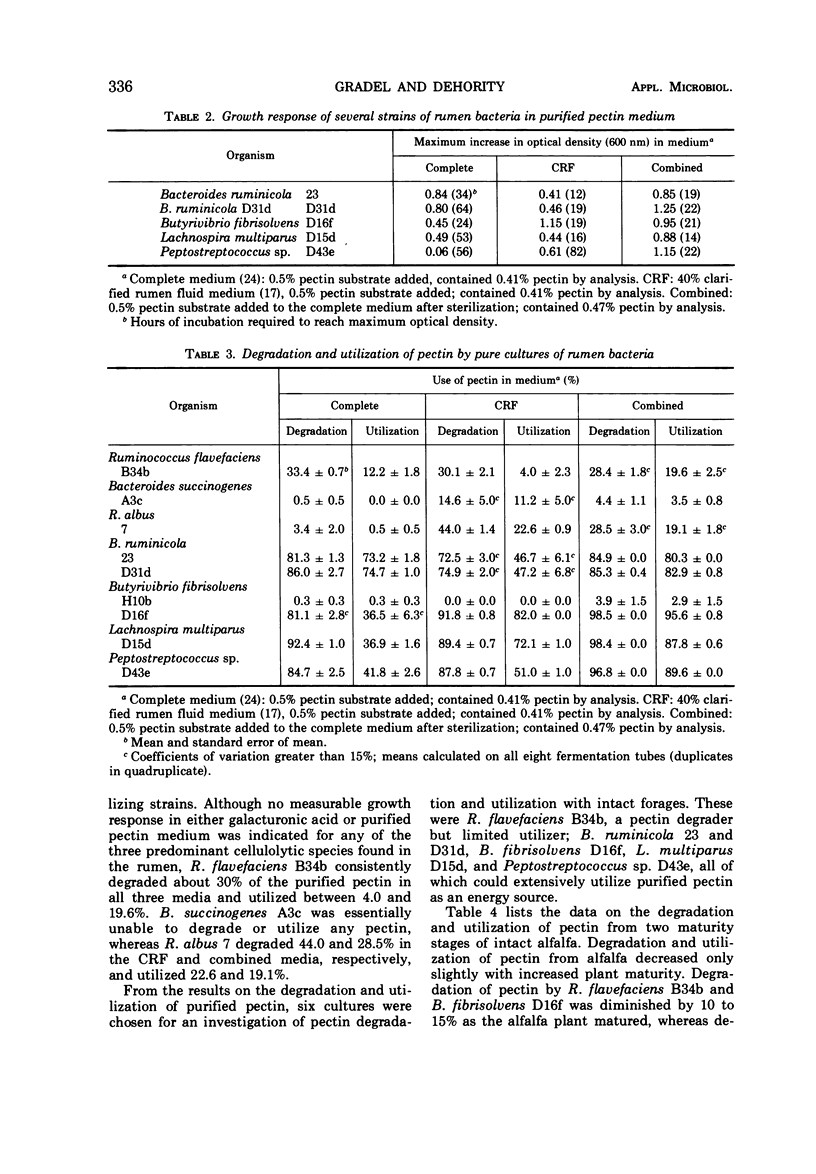
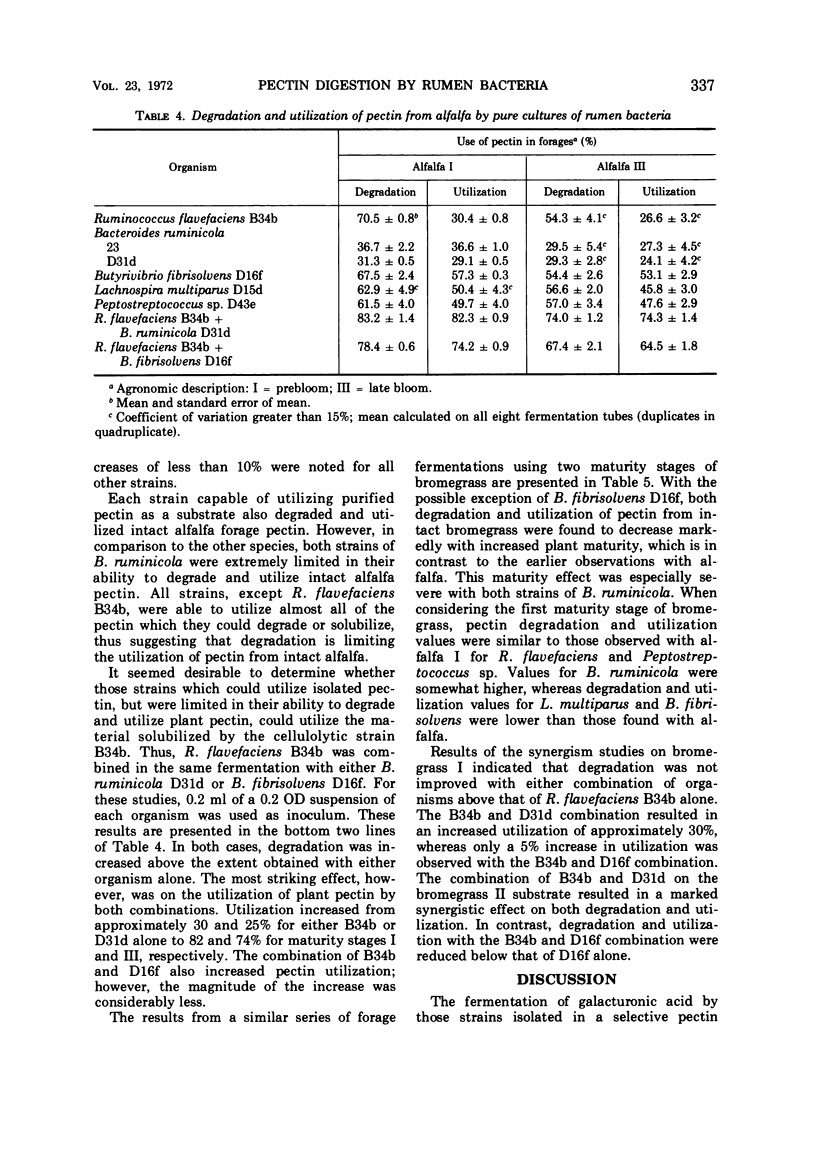
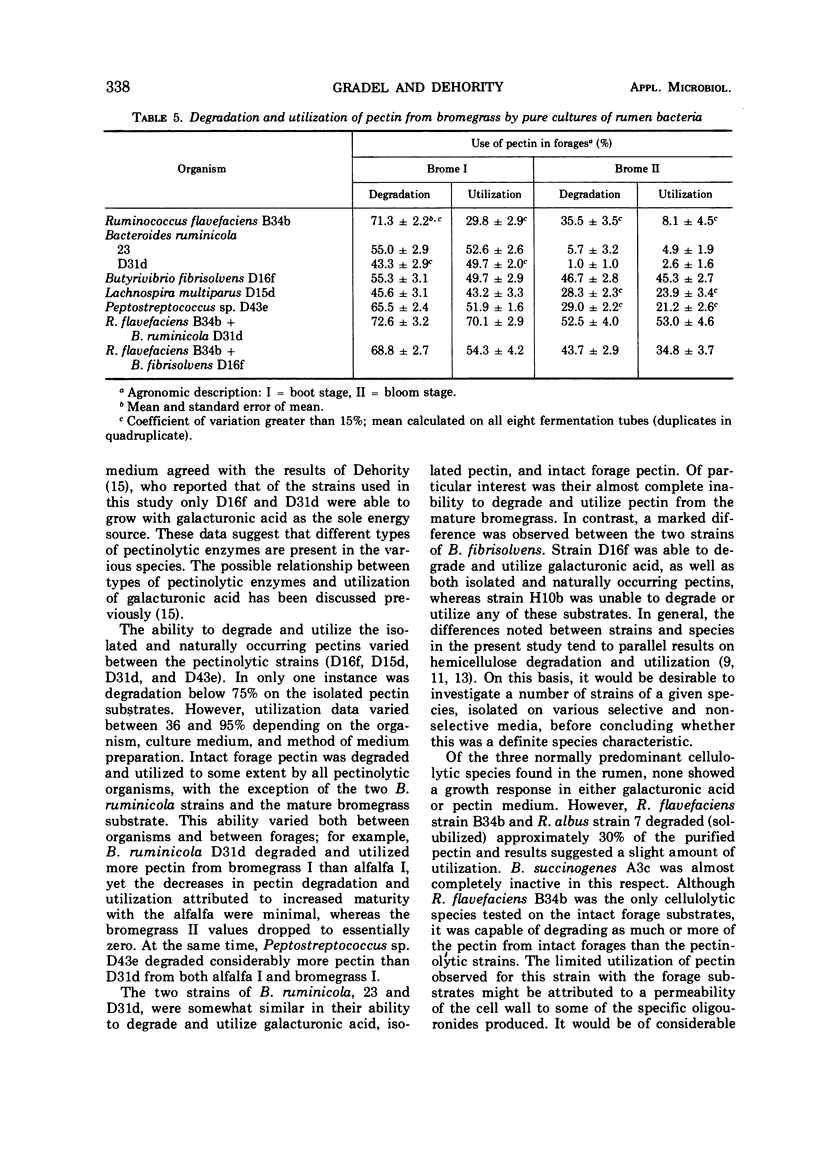
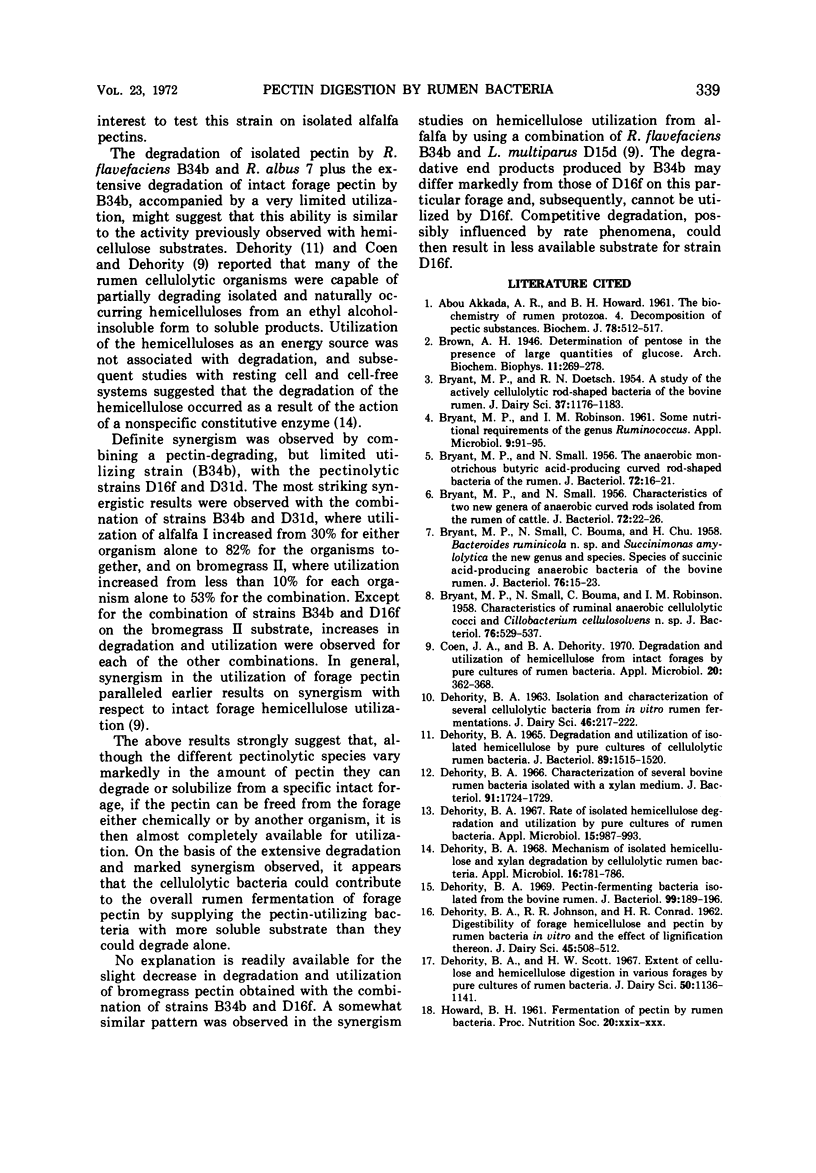
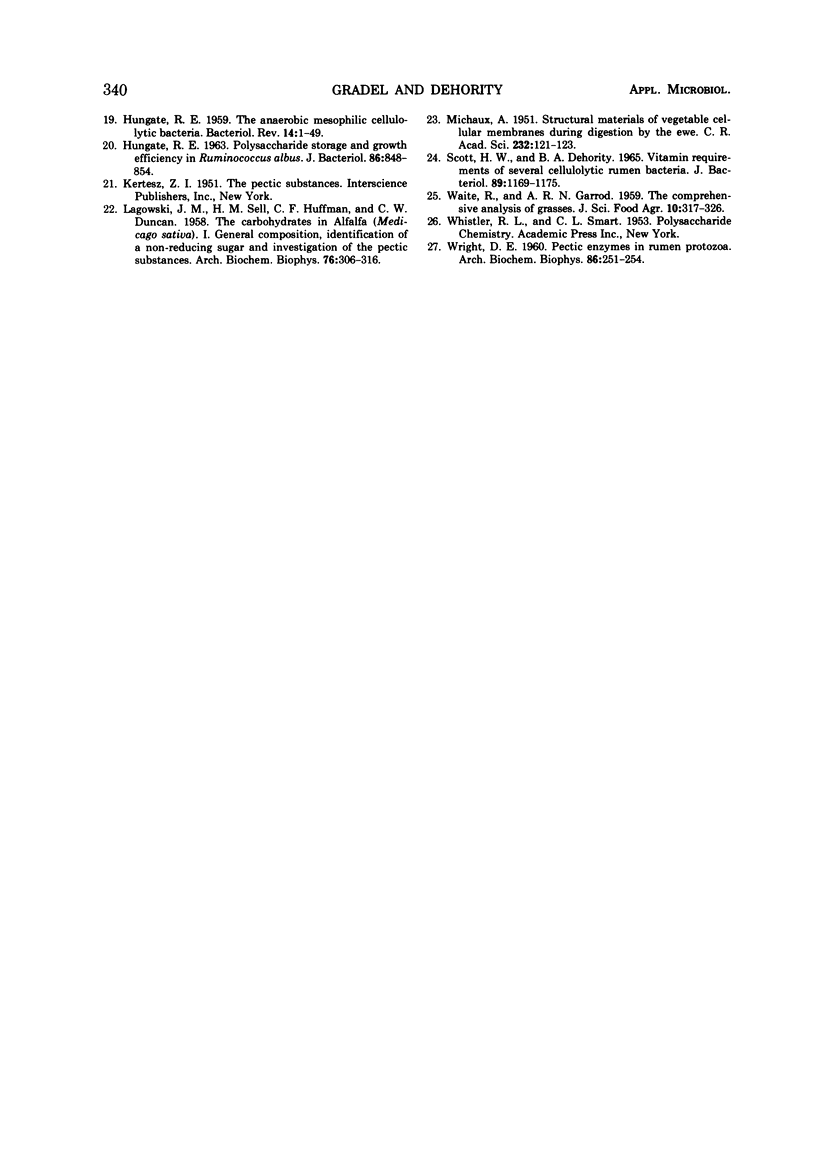
Selected References
These references are in PubMed. This may not be the complete list of references from this article.
- ABOU AKKADA A. R., HOWARD B. H. The biochemistry of rumen protozoa. 4. Decomposition of pectic substances. Biochem J. 1961 Mar;78:512–517. doi: 10.1042/bj0780512. [DOI] [PMC free article] [PubMed] [Google Scholar]
- BRYANT M. P., SMALL N., BOUMA C., CHU H. Bacteroides ruminicola n. sp. and Succinimonas amylolytica; the new genus and species; species of succinic acid-producing anaerobic bacteria of the bovine rumen. J Bacteriol. 1958 Jul;76(1):15–23. doi: 10.1128/jb.76.1.15-23.1958. [DOI] [PMC free article] [PubMed] [Google Scholar]
- BRYANT M. P., SMALL N., BOUMA C., ROBINSON I. M. Characteristics of ruminal anaerobic celluloytic cocci and Cillobacterium cellulosolvens n. sp. J Bacteriol. 1958 Nov;76(5):529–537. doi: 10.1128/jb.76.5.529-537.1958. [DOI] [PMC free article] [PubMed] [Google Scholar]
- BRYANT M. P., SMALL N. Characteristics of two new genera of anaerobic curved rods isolated from the rumen of cattle. J Bacteriol. 1956 Jul;72(1):22–26. doi: 10.1128/jb.72.1.22-26.1956. [DOI] [PMC free article] [PubMed] [Google Scholar]
- BRYANT M. P., SMALL N. The anaerobic monotrichous butyric acid-producing curved rod-shaped bacteria of the rumen. J Bacteriol. 1956 Jul;72(1):16–21. doi: 10.1128/jb.72.1.16-21.1956. [DOI] [PMC free article] [PubMed] [Google Scholar]
- Bryant M. P., Robinson I. M. Some Nutritional Requirements of the Genus Ruminococcus. Appl Microbiol. 1961 Mar;9(2):91–95. doi: 10.1128/am.9.2.91-95.1961. [DOI] [PMC free article] [PubMed] [Google Scholar]
- Coen J. A., Dehority B. A. Degradation and utilization of hemicellulose from intact forages by pure cultures of rumen bacteria. Appl Microbiol. 1970 Sep;20(3):362–368. doi: 10.1128/am.20.3.362-368.1970. [DOI] [PMC free article] [PubMed] [Google Scholar]
- DEHORITY B. A. DEGRADATION AND UTILIZATION OF ISOLATED HEMICELLULOSE BY PURE CULTURES OF CELLULOLYTIC RUMEN BACTERIA. J Bacteriol. 1965 Jun;89:1515–1520. doi: 10.1128/jb.89.6.1515-1520.1965. [DOI] [PMC free article] [PubMed] [Google Scholar]
- Dehority B. A. Characterization of several bovine rumen bacteria isolated with a xylan medium. J Bacteriol. 1966 May;91(5):1724–1729. doi: 10.1128/jb.91.5.1724-1729.1966. [DOI] [PMC free article] [PubMed] [Google Scholar]
- Dehority B. A. Mechanism of isolated hemicellulose and xylan degradation by cellulolytic rumen bacteria. Appl Microbiol. 1968 May;16(5):781–786. doi: 10.1128/am.16.5.781-786.1968. [DOI] [PMC free article] [PubMed] [Google Scholar]
- Dehority B. A. Pectin-fermenting bacteria isolated from the bovine rumen. J Bacteriol. 1969 Jul;99(1):189–196. doi: 10.1128/jb.99.1.189-196.1969. [DOI] [PMC free article] [PubMed] [Google Scholar]
- Dehority B. A. Rate of isolated hemicellulose degradation and utilization by pure cultures of rumen bacteria. Appl Microbiol. 1967 Sep;15(5):987–993. doi: 10.1128/am.15.5.987-993.1967. [DOI] [PMC free article] [PubMed] [Google Scholar]
- HUNGATE R. E. POLYSACCHARIDE STORAGE AND GROWTH EFFICIENCY IN RUMINOCOCCUS ALBUS. J Bacteriol. 1963 Oct;86:848–854. doi: 10.1128/jb.86.4.848-854.1963. [DOI] [PMC free article] [PubMed] [Google Scholar]
- HUNGATE R. E. The anaerobic mesophilic cellulolytic bacteria. Bacteriol Rev. 1950 Mar;14(1):1–49. doi: 10.1128/br.14.1.1-49.1950. [DOI] [PMC free article] [PubMed] [Google Scholar]
- LAGOWSKI J. M., SELL H. M., HUFFMAN C. F., DUNCAN C. W. The carbohydrates in alfalfa Medicago sativa. I. General composition, identification of a nonreducing sugar and investigation of the pectic substances. Arch Biochem Biophys. 1958 Aug;76(2):306–316. doi: 10.1016/0003-9861(58)90156-5. [DOI] [PubMed] [Google Scholar]
- SCOTT H. W., DEHORITY B. A. VITAMIN REQUIREMENTS OF SEVERAL CELLULOLYTIC RUMEN BACTERIA. J Bacteriol. 1965 May;89:1169–1175. doi: 10.1128/jb.89.5.1169-1175.1965. [DOI] [PMC free article] [PubMed] [Google Scholar]
- WRIGHT D. E. Pectic enzymes in rumen protozoa. Arch Biochem Biophys. 1960 Feb;86:251–254. doi: 10.1016/0003-9861(60)90413-6. [DOI] [PubMed] [Google Scholar]


